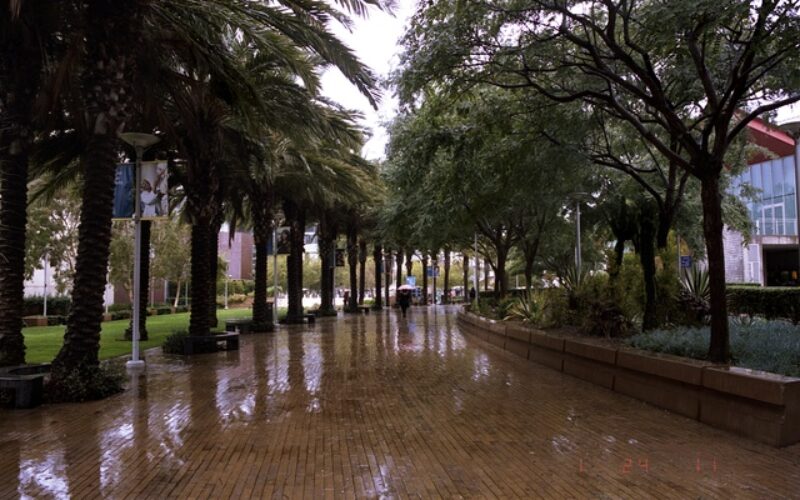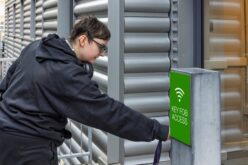With climate patterns shifting, many schools are vulnerable to unexpected flooding. These flood mitigation solutions address such challenges effectively to protect college campuses and the community.
Retention Basins
Retention basins are an effective solution for managing stormwater runoff. These basins collect and hold rainwater to prevent overflows that cause localized flooding. This design can reduce pressure on municipal drains while allowing water to filter back into the ground. Universities with expansive green spaces can easily implement this strategy, turning once-prone areas into functional water retention zones. They are useful in maintaining safe pathways during heavy rain and can be a pleasing aesthetic feature.
Permeable Paving
Traditional paved surfaces, like walkways and parking lots, exacerbate flooding. They force water to rapidly run off into drains, increasing the risk of overload during storms. Permeable paving in sustainable drainage systems is a much smarter alternative. It’s made with porous asphalt, concrete, or interlocking pavers that allow water to filter through the surface and into the soil below. This reduces runoff accumulation and keeps campus pathways usable even during rainy periods. Colleges can incorporate it into high-traffic areas like courtyards, sidewalks, and parking lots without compromising usability.
Bioswales
Bioswales are vegetated channels specifically designed to manage excess water flow. They slow down stormwater collection, allowing contaminants and debris to settle before water absorbs into the ground. This reduces erosion and prevents contaminants from entering nearby bodies of water. Using bioswales on campus perimeters or where runoff frequently gathers can drastically reduce the strain on drainage systems. Planting native grasses and shrubs also boosts aesthetics and contributes to sustainability by improving water quality.
Rain Gardens
Rain gardens combine functionality and beauty, making them a popular choice. They’re positioned in low-lying areas to filter water that would contribute to runoff pools. They can thrive with native plants like ferns, sedges, and wildflowers, creating small ecosystems that perform dual functions as water absorbers and biodiversity hotspots. A functional rain garden near campus residence halls could provide flood prevention and an engaging outdoor environment for students.
Drainage Infrastructure
Old or insufficient drainage systems often contribute to flooding issues. Upgrading pipes, culverts, and drainage channels can improve water management. Pairing modern infrastructure with sustainable solutions, like those outlined above, creates a holistic approach to campus flood mitigation. With these improvements, college facilities can reduce maintenance demands and keep campus areas safe.
Points To Consider
One crucial consideration is understanding topography and drainage patterns. Each campus has distinct low-lying areas, natural water flow paths, and infrastructure vulnerabilities for flood risks. Conducting a thorough assessment identifies high-risk zones.
A Practical Path Forward
College campuses require practical flood mitigation solutions that tackle flooding without disrupting daily life. Innovations like permeable paving and upgraded infrastructure offer a clear path to better water management. Consider these preventative measures to create a safer, cleaner, more sustainable community.
Image Credentials: flooding mitigation By Roy, File 240540904
end of post … please share it!
PAYING FOR COLLEGE: getting the aid you need
-------------------------------------------------------------------------------------------------------------
end of post idea
-------------------------------------------------------------------------------------------------------------
view home improvement ideas at our Photo Remodeling center











